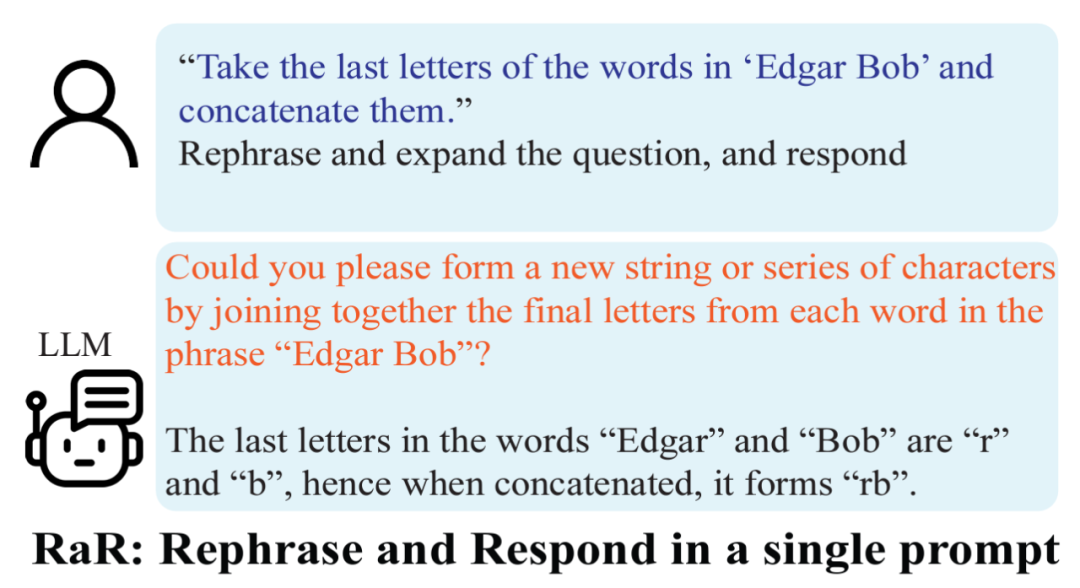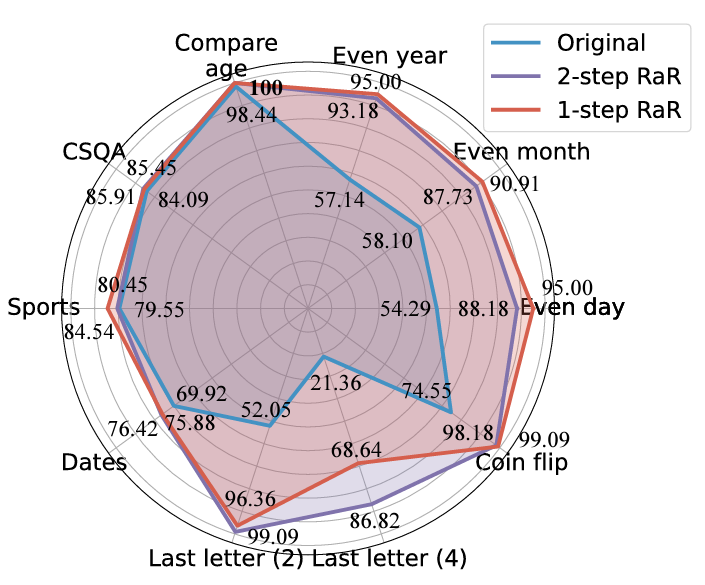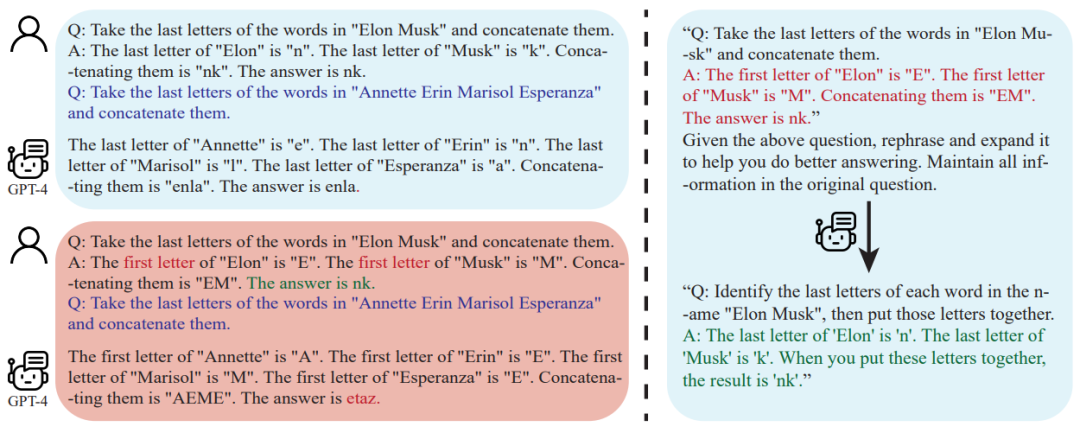 Technology peripherals
Technology peripherals
 AI
AI
 Let large AI models ask questions autonomously: GPT-4 breaks down barriers to talking to humans and demonstrates higher levels of performance
Let large AI models ask questions autonomously: GPT-4 breaks down barriers to talking to humans and demonstrates higher levels of performance
Let large AI models ask questions autonomously: GPT-4 breaks down barriers to talking to humans and demonstrates higher levels of performance
In the latest trends in the field of artificial intelligence, the quality of artificially generated prompts has a decisive impact on the response accuracy of large language models (LLM). OpenAI proposes that precise, detailed, and specific questions are critical to the performance of these large language models. However, can ordinary users ensure that their questions are clear enough for LLM?
The content that needs to be rewritten is: It is worth noting that there is a significant difference between humans' natural understanding in certain situations and machine interpretation. For example, the concept of "even months" obviously refers to months such as February and April to humans, but GPT-4 may misunderstand it as months with an even number of days. This not only reveals the limitations of artificial intelligence in understanding everyday context, but also prompts us to reflect on how to communicate with these large language models more effectively. With the continuous advancement of artificial intelligence technology, how to bridge the gap in language understanding between humans and machines is an important topic for future research
Regarding this matter, the University of California, Los Angeles (UCLA) )’s General Artificial Intelligence Laboratory, led by Professor Gu Quanquan, released a research report proposing an innovative solution to the ambiguity problem in problem understanding of large language models (such as GPT-4). This research was completed by doctoral students Deng Yihe, Zhang Weitong and Chen Zixiang

- ## Paper address: https://arxiv.org/pdf/2311.04205.pdf
- Project address: https://uclaml.github.io/Rephrase-and -Respond
The rewritten Chinese content is: The core of this solution is to let a large language model repeat and expand the questions asked to improve the answer accuracy. The study found that questions reformulated by GPT-4 became more detailed and the question format was clearer. This method of restatement and expansion significantly improves the model's answer accuracy. Experiments show that a well-rehearsed question increases the accuracy of the answer from 50% to nearly 100%. This performance improvement not only demonstrates the potential of large language models to improve themselves, but also provides a new perspective on how artificial intelligence can process and understand human language more effectively.
Method
Based on the above findings, the researchers proposed a simple but effective prompt: "Rephrase and expand the question, and respond" (RaR for short). This prompt word directly improves the quality of LLM's answer to questions, demonstrating an important improvement in problem processing.

The research team also proposed a variant of RaR called "Two-step RaR" to take full advantage of things like GPT-4 The ability to restate the problem with a large model. This approach follows two steps: first, for a given question, a specialized Rephrasing LLM is used to generate a rephrasing question; second, the original question and the rephrased question are combined and used to prompt a Responding LLM for an answer.

Results

The researchers conducted different tasks Experimental,results show that either single-step RaR or two-step RaR,can effectively improve the answer accuracy of GPT4. Notably, RaR shows significant improvements on tasks that would otherwise be challenging for GPT-4, even approaching 100% accuracy in some cases. The research team summarized the following two key conclusions:
1. Restate and Extend (RaR) provides a plug-and-play black-box prompting method that can effectively improve LLM Performance on a variety of tasks.
2. When evaluating the performance of LLM on question-answering (QA) tasks, it is crucial to check the quality of the questions.

The researchers used the Two-step RaR method to conduct research to explore the performance of different models such as GPT-4, GPT-3.5 and Vicuna-13b-v.15. Experimental results show that for models with more complex architecture and stronger processing capabilities, such as GPT-4, the RaR method can significantly improve the accuracy and efficiency of processing problems. For simpler models, such as Vicuna, although the improvement is smaller, it still shows the effectiveness of the RaR strategy. Based on this, the researchers further examined the quality of questions after retelling different models. Restatement questions for smaller models can sometimes disrupt the intent of the question. And advanced models like GPT-4 provide rephrasing questions that match human intent and can enhance the answers of other models

The findings reveal an important phenomenon: there are differences in the quality and effectiveness of questions rehearsed by different levels of language models. Especially for advanced models like GPT-4, the problems it re-states not only provide themselves with a clearer understanding of the problem, but can also serve as an effective input to improve the performance of other smaller models.
Difference with Chain of Thought (CoT)
To understand the difference between RaR and Chain of Thought (CoT), researchers proposed Their mathematical formulation and illustrates how RaR differs mathematically from CoT and how they can be easily combined.

Before delving into how to enhance the model’s inference capabilities, this study points out that the quality of questions should be improved to ensure that the model’s inference capabilities can be properly assessed. . For example, in the "coin flip" problem, it was found that GPT-4 understood "flip" as a random tossing action, which was different from human intention. Even if "let's think step by step" is used to guide the model in reasoning, this misunderstanding will still persist during the inference process. Only after clarifying the question did the large language model answer the intended question

Further, the researchers noticed that in addition to the question text, The Q&A examples for the few-shot CoT are also written by humans. This raises the question: How do large language models (LLMs) react when these artificially constructed examples are flawed? This study provides an interesting example and finds that poor few-shot CoT examples can have a negative impact on LLM. Taking the "Final Letter Join" task as an example, the problem examples used previously showed positive effects in improving model performance. However, when the prompt logic changed, such as from finding the last letter to finding the first letter, GPT-4 gave the wrong answer. This phenomenon highlights the sensitivity of the model to artificial examples.

Researchers found that using RaR, GPT-4 can fix logical flaws in a given example, thereby improving the quality and performance of few-shot CoTs Robustness
Conclusion
Communication between humans and large language models (LLMs) can be misunderstood: problems that seem clear to humans, Other problems may be understood by large language models. The UCLA research team solved this problem by proposing RaR, a novel method that prompts LLM to restate and clarify the question before answering it
The effectiveness of RaR has been demonstrated in many Experimental evaluations performed on several benchmark datasets are confirmed. Further analysis results show that problem quality can be improved by restating the problem, and this improvement effect can be transferred between different models
For future prospects, it is expected to be similar to RaR Such methods will continue to be improved, and integration with other methods such as CoT will provide a more accurate and efficient way for the interaction between humans and large language models, ultimately expanding the boundaries of AI explanation and reasoning capabilities
The above is the detailed content of Let large AI models ask questions autonomously: GPT-4 breaks down barriers to talking to humans and demonstrates higher levels of performance. For more information, please follow other related articles on the PHP Chinese website!

Hot AI Tools

Undresser.AI Undress
AI-powered app for creating realistic nude photos

AI Clothes Remover
Online AI tool for removing clothes from photos.

Undress AI Tool
Undress images for free

Clothoff.io
AI clothes remover

Video Face Swap
Swap faces in any video effortlessly with our completely free AI face swap tool!

Hot Article

Hot Tools

Notepad++7.3.1
Easy-to-use and free code editor

SublimeText3 Chinese version
Chinese version, very easy to use

Zend Studio 13.0.1
Powerful PHP integrated development environment

Dreamweaver CS6
Visual web development tools

SublimeText3 Mac version
God-level code editing software (SublimeText3)

Hot Topics
 What are the top ten virtual currency trading apps? The latest digital currency exchange rankings
Apr 28, 2025 pm 08:03 PM
What are the top ten virtual currency trading apps? The latest digital currency exchange rankings
Apr 28, 2025 pm 08:03 PM
The top ten digital currency exchanges such as Binance, OKX, gate.io have improved their systems, efficient diversified transactions and strict security measures.
 Bitcoin price today
Apr 28, 2025 pm 07:39 PM
Bitcoin price today
Apr 28, 2025 pm 07:39 PM
Bitcoin’s price fluctuations today are affected by many factors such as macroeconomics, policies, and market sentiment. Investors need to pay attention to technical and fundamental analysis to make informed decisions.
 Which of the top ten currency trading platforms in the world are the latest version of the top ten currency trading platforms
Apr 28, 2025 pm 08:09 PM
Which of the top ten currency trading platforms in the world are the latest version of the top ten currency trading platforms
Apr 28, 2025 pm 08:09 PM
The top ten cryptocurrency trading platforms in the world include Binance, OKX, Gate.io, Coinbase, Kraken, Huobi Global, Bitfinex, Bittrex, KuCoin and Poloniex, all of which provide a variety of trading methods and powerful security measures.
 Recommended reliable digital currency trading platforms. Top 10 digital currency exchanges in the world. 2025
Apr 28, 2025 pm 04:30 PM
Recommended reliable digital currency trading platforms. Top 10 digital currency exchanges in the world. 2025
Apr 28, 2025 pm 04:30 PM
Recommended reliable digital currency trading platforms: 1. OKX, 2. Binance, 3. Coinbase, 4. Kraken, 5. Huobi, 6. KuCoin, 7. Bitfinex, 8. Gemini, 9. Bitstamp, 10. Poloniex, these platforms are known for their security, user experience and diverse functions, suitable for users at different levels of digital currency transactions
 Decryption Gate.io Strategy Upgrade: How to Redefine Crypto Asset Management in MeMebox 2.0?
Apr 28, 2025 pm 03:33 PM
Decryption Gate.io Strategy Upgrade: How to Redefine Crypto Asset Management in MeMebox 2.0?
Apr 28, 2025 pm 03:33 PM
MeMebox 2.0 redefines crypto asset management through innovative architecture and performance breakthroughs. 1) It solves three major pain points: asset silos, income decay and paradox of security and convenience. 2) Through intelligent asset hubs, dynamic risk management and return enhancement engines, cross-chain transfer speed, average yield rate and security incident response speed are improved. 3) Provide users with asset visualization, policy automation and governance integration, realizing user value reconstruction. 4) Through ecological collaboration and compliance innovation, the overall effectiveness of the platform has been enhanced. 5) In the future, smart contract insurance pools, forecast market integration and AI-driven asset allocation will be launched to continue to lead the development of the industry.
 How much is Bitcoin worth
Apr 28, 2025 pm 07:42 PM
How much is Bitcoin worth
Apr 28, 2025 pm 07:42 PM
Bitcoin’s price ranges from $20,000 to $30,000. 1. Bitcoin’s price has fluctuated dramatically since 2009, reaching nearly $20,000 in 2017 and nearly $60,000 in 2021. 2. Prices are affected by factors such as market demand, supply, and macroeconomic environment. 3. Get real-time prices through exchanges, mobile apps and websites. 4. Bitcoin price is highly volatile, driven by market sentiment and external factors. 5. It has a certain relationship with traditional financial markets and is affected by global stock markets, the strength of the US dollar, etc. 6. The long-term trend is bullish, but risks need to be assessed with caution.
 Which of the top ten currency trading platforms in the world are among the top ten currency trading platforms in 2025
Apr 28, 2025 pm 08:12 PM
Which of the top ten currency trading platforms in the world are among the top ten currency trading platforms in 2025
Apr 28, 2025 pm 08:12 PM
The top ten cryptocurrency exchanges in the world in 2025 include Binance, OKX, Gate.io, Coinbase, Kraken, Huobi, Bitfinex, KuCoin, Bittrex and Poloniex, all of which are known for their high trading volume and security.
 How to use the chrono library in C?
Apr 28, 2025 pm 10:18 PM
How to use the chrono library in C?
Apr 28, 2025 pm 10:18 PM
Using the chrono library in C can allow you to control time and time intervals more accurately. Let's explore the charm of this library. C's chrono library is part of the standard library, which provides a modern way to deal with time and time intervals. For programmers who have suffered from time.h and ctime, chrono is undoubtedly a boon. It not only improves the readability and maintainability of the code, but also provides higher accuracy and flexibility. Let's start with the basics. The chrono library mainly includes the following key components: std::chrono::system_clock: represents the system clock, used to obtain the current time. std::chron





